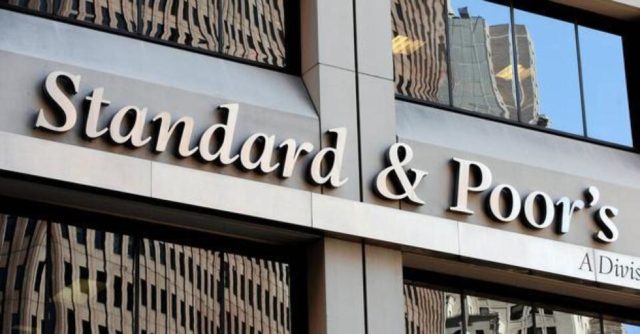S&P Global Ratings agency has pointed to a resilient external sector as it revised South Africa’s credit-rating outlook to positive from stable, exactly two years after downgrading the country’s bonds to junk.
S&P GLOBAL Ratings agency has pointed to a resilient external sector as it revised South Africa’s credit-rating outlook to positive from stable, exactly two years after downgrading the country’s bonds to junk.
S&P on Friday also affirmed South Africa’s long-term foreign and local currency debt ratings at “BB-” and “BB”.
According to S&P, recent favourable terms of trade in South Africa had improved the country’s external and fiscal trajectory.
However, it warned that the gains were partly offset by ongoing supply-side constraints to export volumes which have seen inflation tracking toward the upper limit of the 3 to 6 percent target range.
S&P primary credit analyst Zahabia Gupta said the country’s reasonably large net external asset position, flexible currency and deep domestic capital markets, provided strong buffers against shifts in external financing.
“The positive outlook reflects our expectation that favourable terms of trade, a path towards contained fiscal expenditure, and the implementation of some structural reforms could lead to a continued easing of fiscal and external pressures,” Gupta said.
“We consider South Africa’s monetary flexibility, the freely floating exchange rate, and the country’s deep financial markets to be significant credit strengths.”
S&P expects South Africa’s economic growth to decline to 1.8 percent in 2022 and taper off to 1.7 percent on average over the next three years, in line with the revised forecast by the SA Reserve Bank.
In addition, the agency expected South Africa to post a current account surplus of 2.7 percent in 2022, though smaller than 3.7 percent in 2021, for the third consecutive year, as prices for key metals and mining exports have risen significantly since the start of the Russia-Ukraine conflict.
The ratings agency noted some improvement on the implementation of key reform targets under Operation Vulindlela, as well as higher-than-expected tax revenue in the 2021 fiscal year.
This includes the long-awaited digital spectrum auctions in March, an increase in the captive generation threshold to 100MW from 1MW for private sector industries, and implementation of the e-visa system.
“Continued economic reforms, such as those related to diversifying electricity generation, third-party access to the freight rail network, privatisation of government-related entities, and changes to mining sector regulation could deliver upside to growth,” it said.
S&P said it could raise South Africa’s ratings if economic growth is higher than it currently expects, with continued fiscal consolidation, against a backdrop of structural and governance reforms and continued supportive external sector dynamics.
However, it also said it could revise the outlook to stable if external or domestic shocks derail South Africa’s economic growth over the forecast period or if fiscal financing or external pressures significantly increase.
The National Treasury said the government was using a portion of the additional revenue to accelerate debt stabilisation.
It said faster implementation of economic reforms, accompanied by fiscal consolidation to provide a stable foundation for growth, would support a faster recovery and higher levels of economic growth over the long term.
Finance Minister Enoch Godongwana said the government must build the economy within a sustained macro-economic framework as debt servicing costs were eroding expenditure on important socio-economic projects.
He said hospitals and police stations were struggling to fill vacant posts.
“We have to change the composition of that expenditure to talk to those real issues and ensure that there is a limit in the growth of this R1 trillion in debt servicing costs,” Godongwana said.
– BUSINESS REPORT








